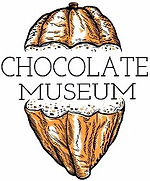

Week 7 - Transformation from cocoa beans to chocolate
G for Growing and Grinding
3000 years ago, the early Olmec and Mayan civilisations were already cultivating and growing cocoa for their own consumption and for trade.
Growing cocoa trees is a difficult journey; the trees require very specific temperatures, light, rain and type of soil, and can only grow between 20° North to 20° South of the Equator.
The cocoa tree takes 3 to 4 years to produce fruit, 10 years to grow strong, and will die after 30 to 50 years. Flowers can bloom all year long but only around 20% will develop fruit, which needs 5 to 7 months to grow. Lots of animals such as monkeys, parrots, bats, squirrels and insects love to eat the cocoa fruit; this, as well as many diseases, decrease the production of cocoa by about one fifth (20%).
Most of the process to transform cocoa beans into chocolate is still done today by hand, and is using the same techniques as the ancient civilisations.
PICKING: When the cocoa pods are ripe, farmers use a long pole with a knife on the end to pick them, taking care not to damage the buds or flowers; they make a pile of the cocoa pods and leave them for a few days.
CUTTING: Using a long knife to cut them open, the cocoa beans are extracted by hand; The empty pods are left to rot and become compost.
FERMENTATION: For 2 to 7 days, according to the type of cocoa, the beans will be placed in baskets or wooden boxes with banana leaves and weights on top to compress them. This step will remove bitterness and astringency, and develop the chocolate aromas.
DRYING: For 8 to 15 days, the beans are exposed to the sun and turned regularly, a more modern method would involve a machine blowing hot air. They are covered at night or when it rains. This step will bring down the humidity to less than 7% to avoid mould formation so they can be stored for longer.
ROASTING: In a pan over a flame, or often done in large ovens today, this step will help remove the husk and give the cocoa a stronger flavour.
WINNOWING: Done by hand or mechanically, the husk needs to be removed as it won’t dissolve in the next process.
GRINDING: Until mid 19th century, grinding was done on a lava rock table (called Metate). Today it is done in a concher, a machine that warms and grinds the cocoa beans into a paste. Sugar, milk or more cocoa butter can be added according to different chocolate qualities and recipes.
CHOCOLATE IS BORN!
To download files
BUTTONS







